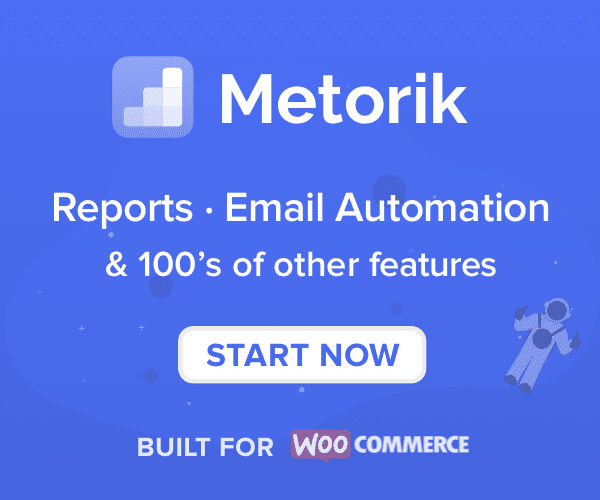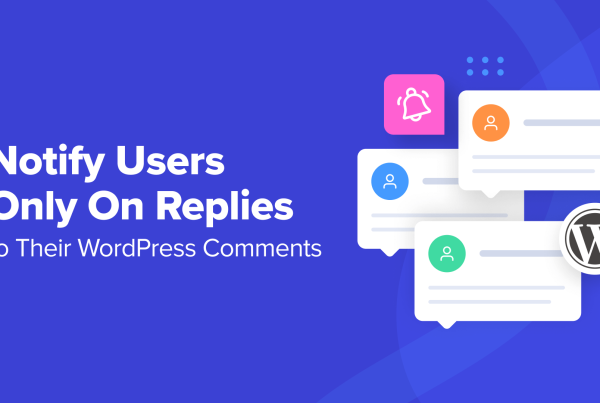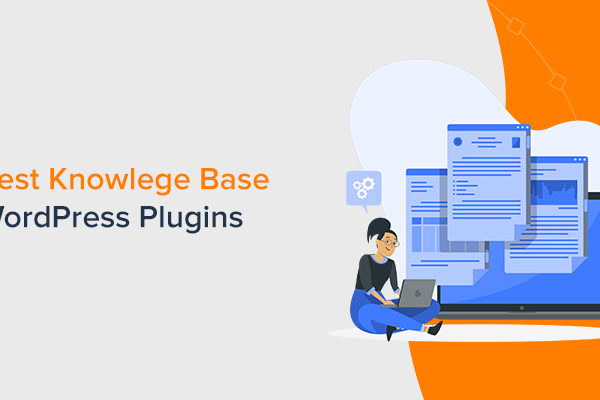If you are running a WooCommerce shop and are looking for a customer segmentation software or a way to segment your eCommerce or WooCommerce customer data, then you have landed on the right page!
Data is one of the most important factors when it comes to growing your WooCommerce store. No matter how good your marketing techniques are and how much work you have done to make them work, if you are not able to integrate your website’s customer data in your techniques, your strategies or techniques will have a hard time working out.
The thing is, we all know what data is and how useful it can be, but when it comes to using that data, most of us are lost as most mainstream tools are kinda complicated and hard to take out reports from.
If you too are having problems working out your customer data and segmentation, you can stop pulling your hairs out now. In this article, we will be doing a tutorial for customer data segmentation using the awesome WooCommerce tool, Metorik.
Click here to sign up with Metorik (FREE)
If you have a WooCommerce store and are looking for a customer segmentation software to help you create reports, your search ends here! Metorik is super easy to use, and you too can start leveraging the power of customer segmentation on your website in no time!
Since we will be talking all about customer segmentation here, it is good to understand first what is customer segmentation.
What is Customer Segmentation?
It is not that much of a difficult concept to understand but still, I will try to make this as non-technical and understandable as possible.
On any WooCommerce store, you see various kinds of orders from different customers. There is no way you can put all your customers in one basket, and even if you do, it will not be the best decision for creating future marketing plans. Since we have a significant amount of customers and orders on our website, we need to bifurcate the customers so we can target our efforts more accurately.
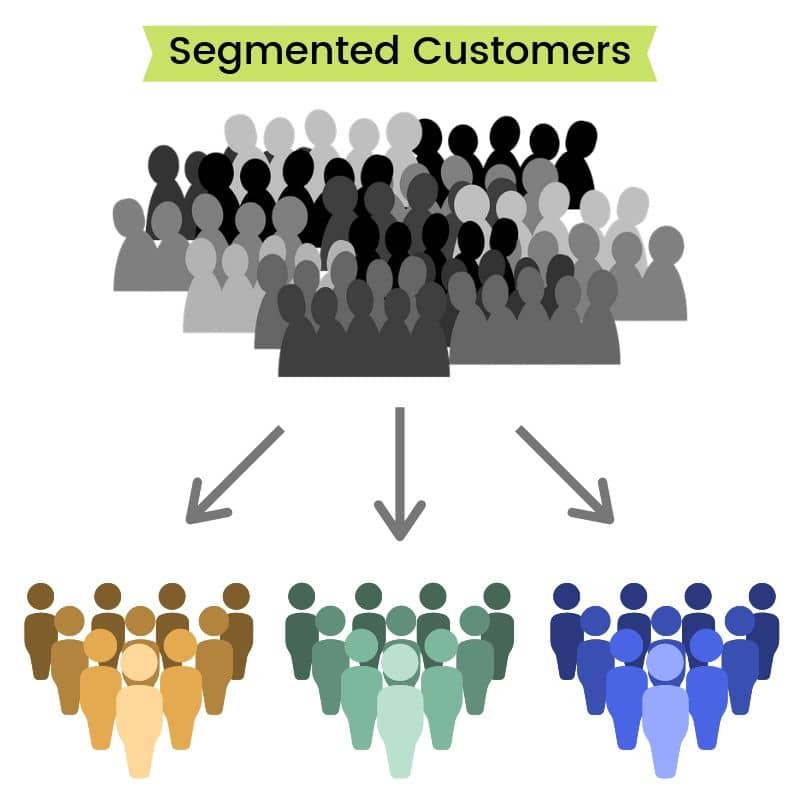
“So, should I be dividing my customers?”
In a way, yes. What I mean by bifurcating is that you need to understand your users and pick the ones which are similar in a way relevant to marketing. Makes sense?
Let’s take an example. You have a store pouring in orders from all over the world. Now you are running 4th of July discount sale for your customers from the US only. Now, if you send out the sale email to your global user base, it will only backfire. You need only to pick the users who are geographically located in the US and send them the independence day newsletter.
This was a very simple example of customer segmentation. You can do more in-depth segmentations with your customer data and that too in very less time with Metorik. For example, you can bifurcate your users who have not bought anything in the last 30 days and have ordered more than three times on our store from all over the world. You can add as many parameters and metrics as you want and create your own customer segment.
“But how do I know the basis for segmentation?”
If you have not done customer segmentation earlier, it is possible to have a tough time understanding on what basis you bifurcate your customers to create customer segments. If you as well are having the same problem, let’s first see what the common basis are for bifurcating customers.
Common Bases of Customer Segmentation
Customers are broadly segmented or bifurcated on the following bases.
Demographic Info.: This segment takes care of grouping with respect to gender, age, marital status, occupation, purchase power, income, etc.
Geographic Info.: This broadly depends on the scope of the company. For local businesses, it might refer to zones, cities, or states. On the other hand, for large businesses, it might refer to states, countries, or even continents.
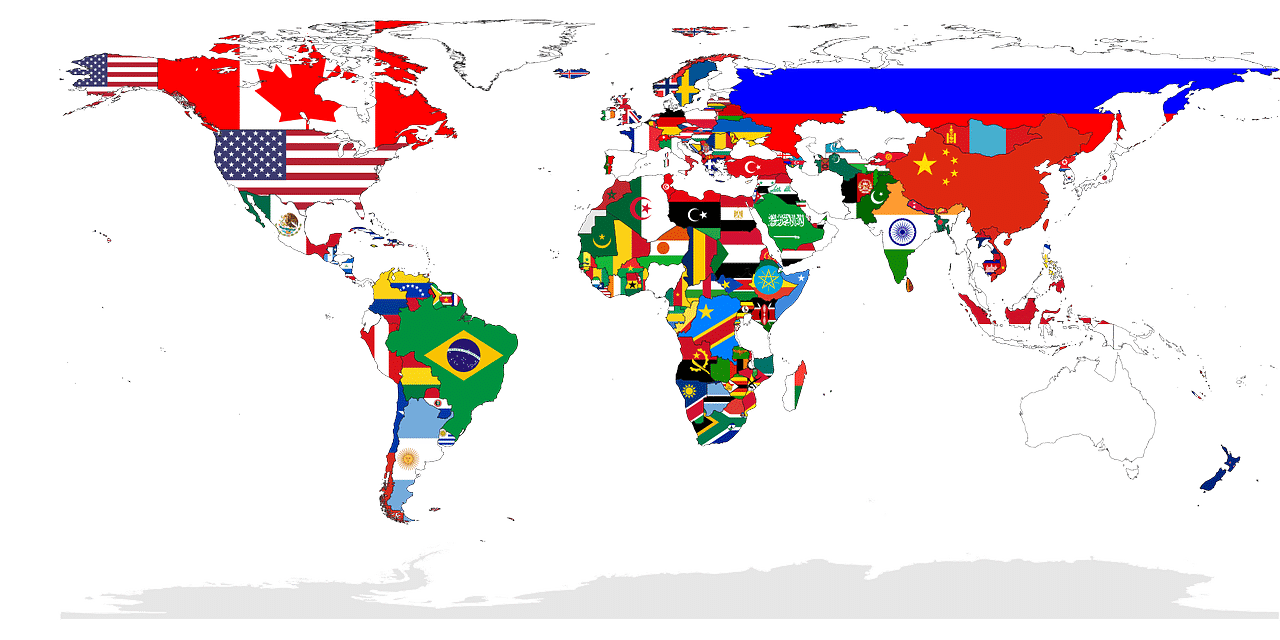
Psychographic Info.: This targets only the psychological aspects of bifurcating customers like social status, personality traits, preferences, thought process, beliefs, etc.
Behavioral Info: These all depend on the behavior of the customer in terms of marketing like purchase power, consumption, interests, loyalty, usage, desired benefits, etc.
These four are the most common or broad segments which will help you understand how segmentation is done. There is no limitation to using this data, and you can even mix and match your desired customers as well.
For example, selecting the customers who are living in Australia (Demographic) and who prefer to buy only organic food (Psychological) with discounts on the retail price (Behavior traits).
We will be seeing how you can mix multiple parameters with Metorik segmenting feature.
Why is Customer Segmentation Important?
In today’s market scenario, customer segmentation is not an option anymore; it is an utmost necessity. I am sure you must be knowing some good reasons why you should be segmenting your customers. Let’s do a round-up of why customer segmentation is important and how it can help you to grow your WooCommerce store.
Better Insights on your Customers
When you segment your customers based on marketing initiatives, you can get a good understanding of who your customers are. Once you understand that, you can drive all your marketing efforts to focus on catering the customers’ needs.
Moreover, once you know this data, you will get to tackle the problems your customers are facing or how you can make your product or service, serve better to the customers.
Devise Data-Backed Marketing Plans
Marketing plans which are backed by data study and analysis have way too high chances of working and bringing more business to the company. When you create content with a specific group of people in mind, you increase the chances of grabbing the attention of your customers way much faster.
Since you are working with targeted data, you are not shooting in the dark. Instead, you are taking a calculated and analyzed step towards marketing, which has way more chances of working.
Upselling Opportunities
When you understand what customers are buying continuously and what group can be termed under “one time buyers,” you can start upselling on the basis of that information. You can target a better customer group as you will be able to know which customer segments are buying your premium products and what are the upsells that can be pitched that that group of customers.
For example, If you have a multi-line store, you can start upsells based on the previous purchase of your customer base. If some of your customers are buying apparels, tell them about the new arrivals and additions in your clothing line. This will have a much better return than simply blasting emails to all your users regarding new arrivals.
Effective Pricing and Deals Ideas
Since you will have the data, you will be able to read what is the price that your users are comfortable with. You can check how many buyers are buying during Black Friday deals, Christmas offers, and 4th of July sales.
If you see a pattern in these flash sales, you can make regular sales and offers for your customers and also adjust the price of the product or service accordingly.
Overall Growth
When you can understand your customers’ behavior and psychology, you will be able to grow your store a lot faster. Since you will now know your customers well, you will be able to make better plans, make changes to the products accordingly, and can cater to the needs of the customer in a much better way.
All this data can really help your customers, and once you understand that and start working towards it, the product and the company behind the product will definitely grow.
How to Do Customer Segmentation Easily?
Customer Segmentation indeed is a great tool and can help you a lot in your marketing initiatives. But, most of the time, marketers and store owners have a hard time with this is simply because of the customer segmentation software they are using.
Some of the segmentation tools out there are difficult to work with and does not offer a lot. Even if they do, there are not many options for the uses to take analysis from, and it can be very complicated to work with.
Today for our tutorial, we will be using Metorik tool for WooCommerce stores. If you too have a WooCommerce store of which you would want to segment the data from, you can try using Metorik as well and analyzing the performance of your eCommerce store.
Let’s see how you can do segmenting of WooCommerce store’s customer data with Metorik.
Starting with Metorik
Metorik has a super useful dashboard which can break down everything happening on your eCommerce store in a single place. This dashboard can show every activity regarding the orders, products, subscriptions, coupons, carts, and customers.
Since every store is not the same, and every user wants different data, Metorik offers the option to customize your dashboard, and you can even create new custom WooCommerce dashboards for advanced tracking and analytics.
In these dashboards, you will see cards. These cards are there to display information regarding your WooCommerce store like net revenue, order, traffic, customer activity, coupon usage, and a lot more for the selected period of time.
Since you get the option to customize your dashboard, you can add, alter, and remove cards on your dashboard as well.
Segmenting in Metorik
When you add a new card, you get an option to choose what type of information you want to display on your dashboard. There you will see two options- segment totals, and segment lists.
Segment totals
The segment total as the name says helps the user by displaying the total of the orders, customers, products, etc. You can even choose to display all the details regarding the segment total like average orders value, lifetime value, orders, number of customers, etc.
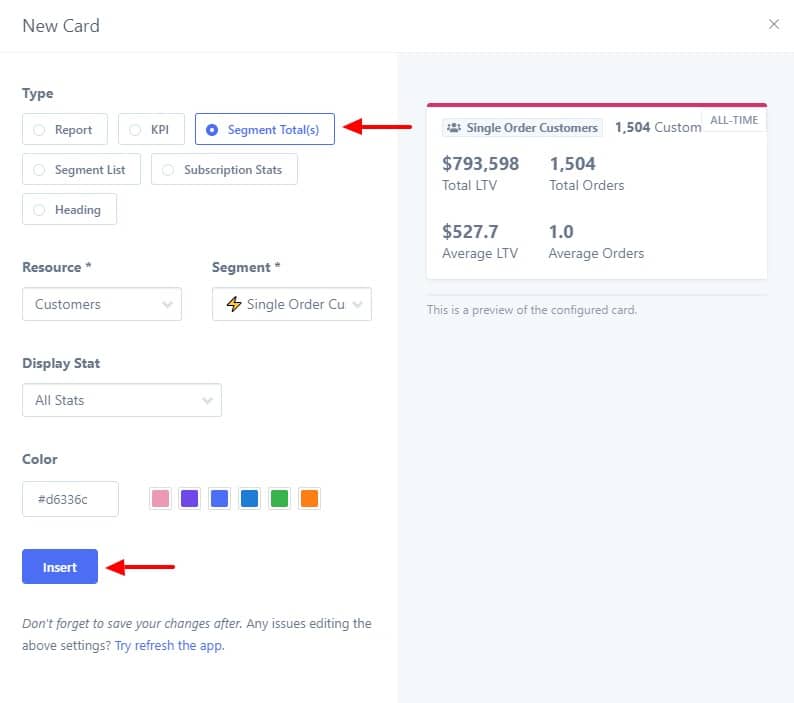
This information will be for all time users, and you can see the same in the preview mode of the cart in the right column of the dialogue box. If you want to change the segment to show data for a specific period of time, you can create a custom segment for the same, and we will see how you can do that later in this article.
Segment Lists
Segment lists display the list of orders, customers, products, etc. which match the criterion set by the user. For example, users can change the type of customer segment to filter and how they should be arranged and on what basis like join date, item count, first name, last name, etc.
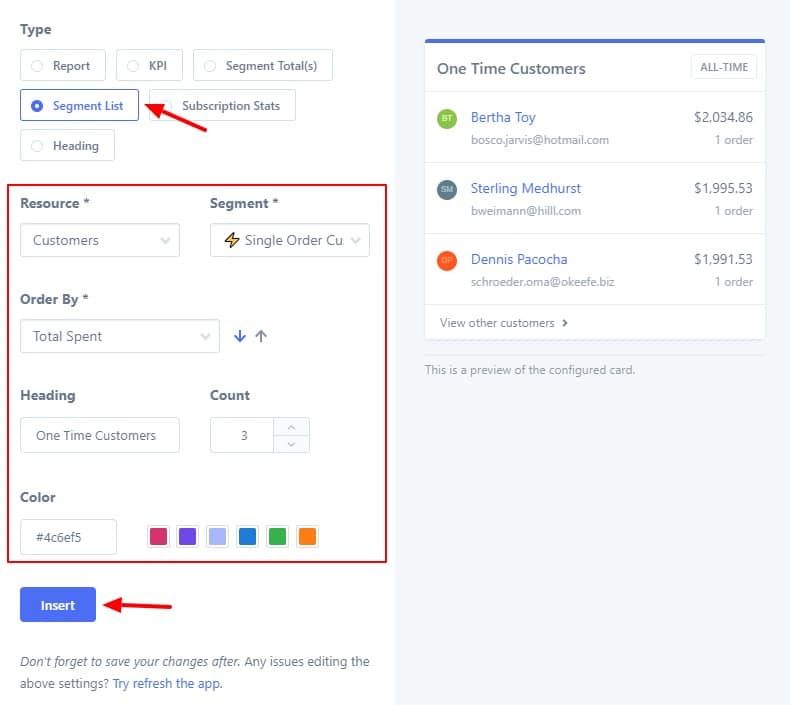
You can even choose the number of entries you want to display on the dashboard. All the remaining entries will be clipped, and if you wish to see all the other lists, you can easily do that by clicking on view other customers option at the bottom of the card.
Custom Customer Segments in Metorik
Now you do have predesigned useful segments which you can use in filtering data on your dashboard. On top of those segments, you also get the option to create custom segments so that you can do more detailed and targeted customer segmentation.
There are dozens of factors on which you can segment your customers on Metorik dashboard, and you can apply different filters to the segments as well, which can give you more targeted results and a group of people.
You also can use the “Engage” feature of Metorik to reach out to this group of people and make them come back to the store. You also get the option to export these custom customer segments if you want.
The best part is all of this is done live. So, if you are creating a custom segment, you can see how many people are there and who all are there for that particular group.
Creating a Custom Segment and displaying it in Metorik Dashboard
Now, we know how metorik can help you in creating custom segments. Let’s see how you can leverage the power of customer segmentation with Metorik.
Firstly, you need to log into your Metorik Dashboard for your WooCommerce store. If you do not have a metorik account, you can sign up right now for the FREE 30 day trial period.
Click here to sign up with Metorik (FREE).
Now, once you have an account and have connected your WooCommerce store with Metorik, we can go ahead and see how you can create customer segments.
When you will log in, you will see the Metorik dashboard. In the dashboard, you will see cards where we will be adding our custom segment to display information, but before that, we will be creating a custom segment first.
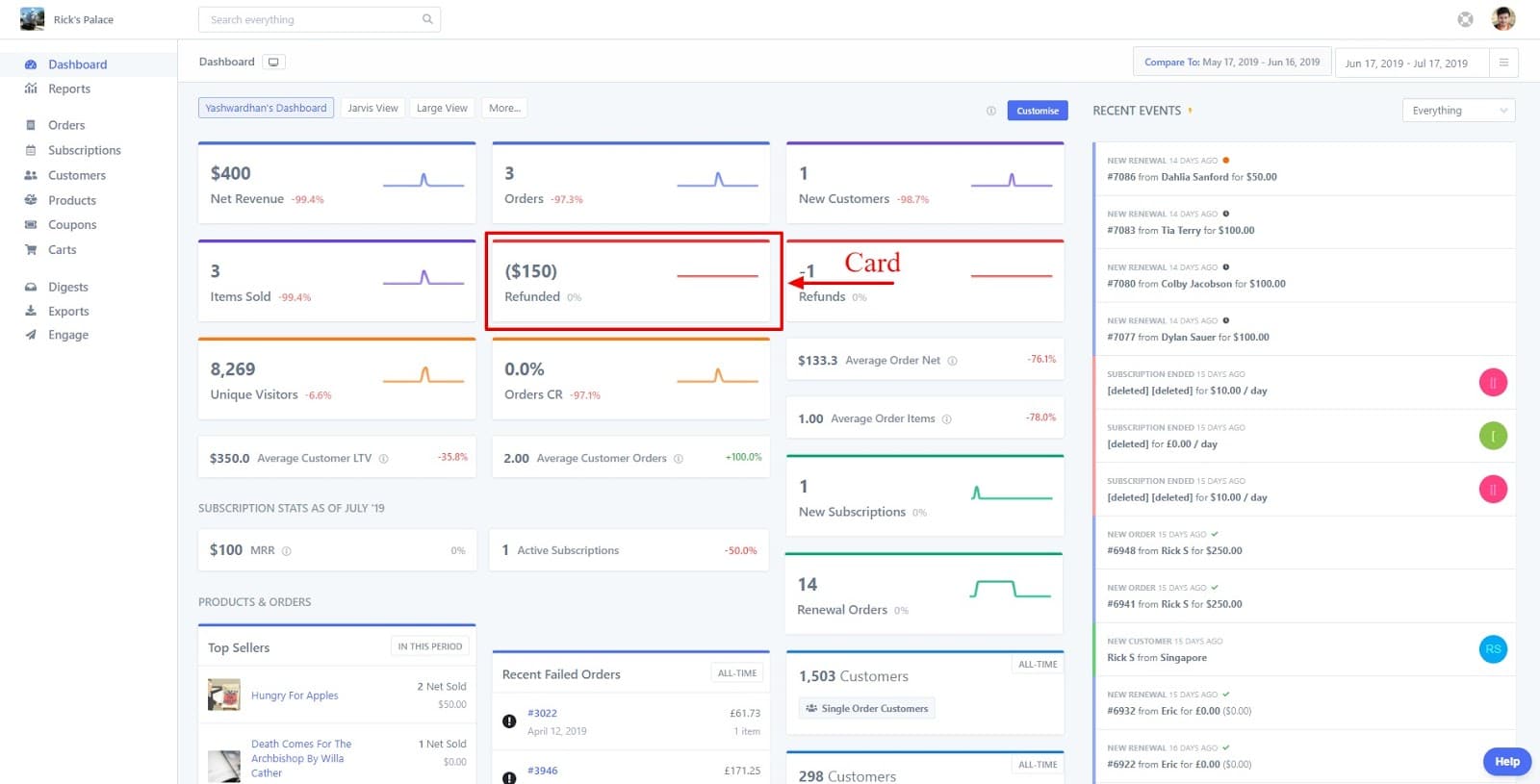
For this, click on the Customers tab on the left.
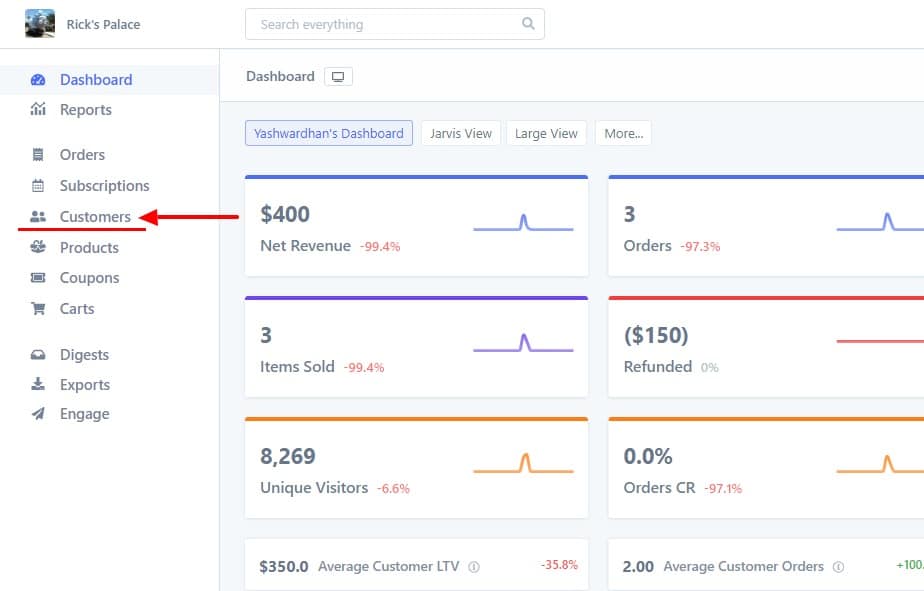
Now click on the segment customers by anything field and the list of parameters will show up. Select the parameter you want and enter the values for that parameter.
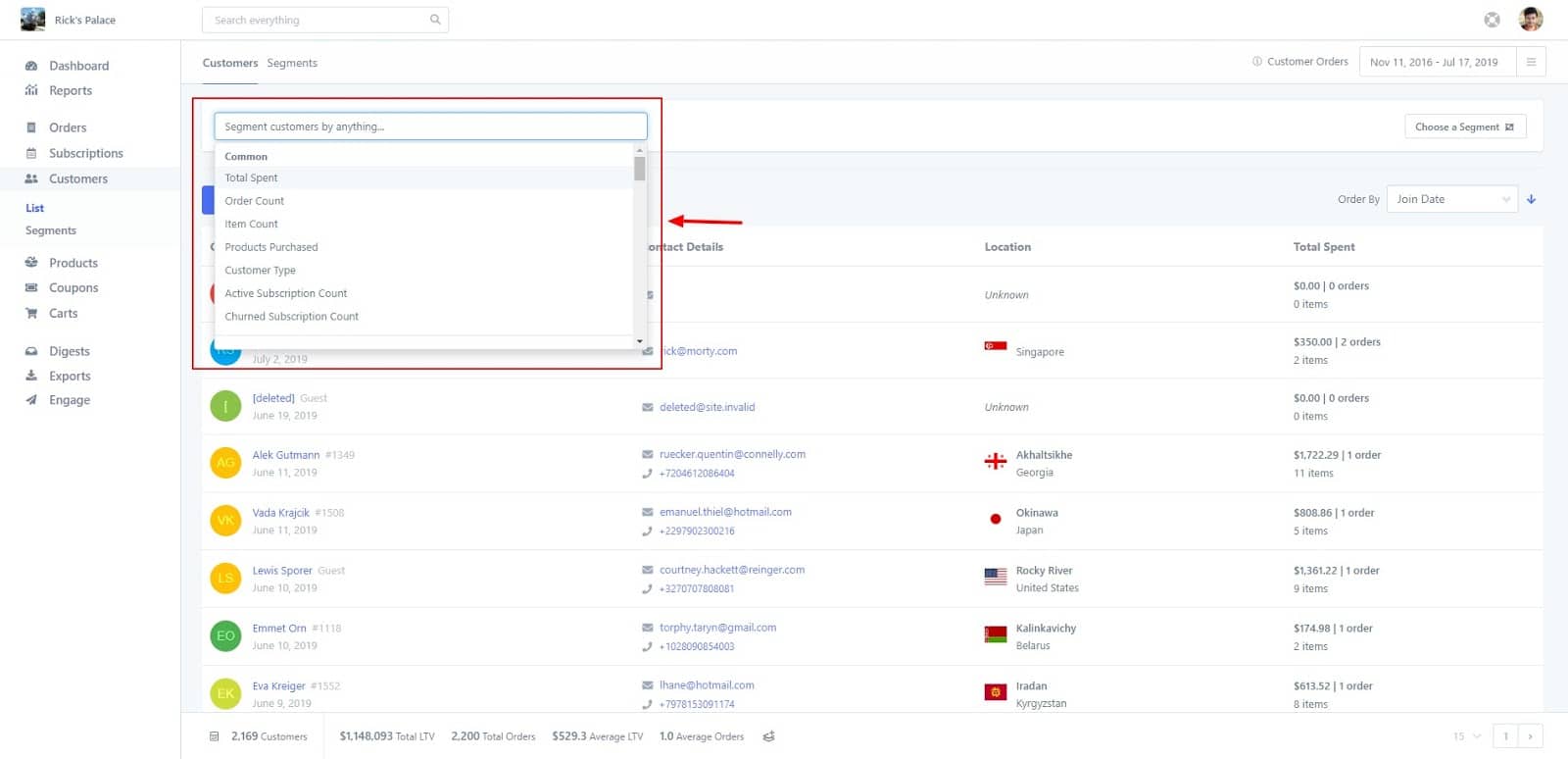
Here, I am adding the following parameters. You can add more parameters by clicking on the blue “plus” icon at the end of the last parameter you entered.
I want to segment the customers who:
- Spent more than $400.
- Have bought more than 10 items.
- Ordered more than once.
- And, haven’t ordered in the last 6 months.
Once you enter the parameters, you will see the list of people who comes under this category below the segmenting option. Go ahead and save this segment by giving it a proper name and clicking on the save segment button.
This is what the parameters/screen would look like:
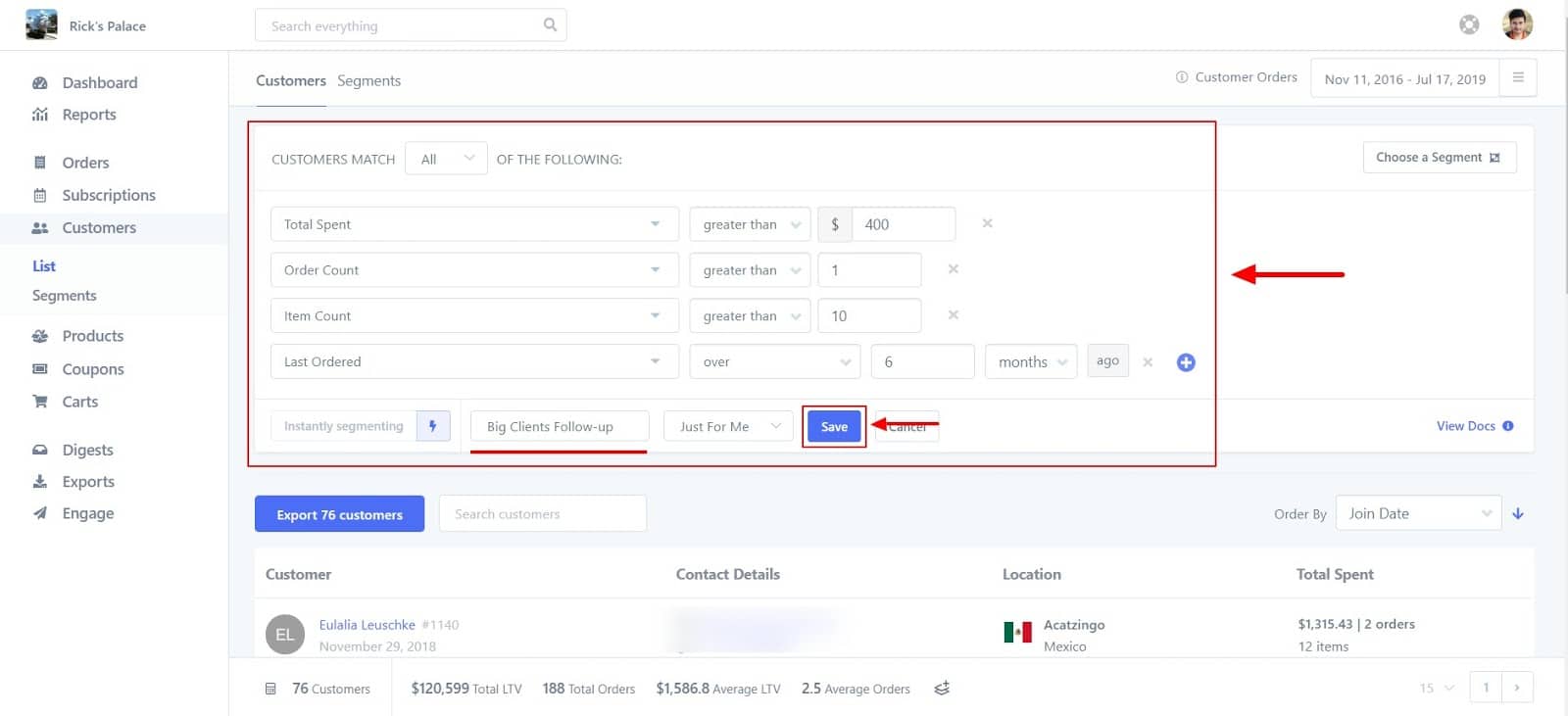
Once the segment is saved, you will see this message.

Now we have created the segment, and we will be using this segment in our dashboard now.
Using Segment in Metorik Dashboard
For this, go back to the Dashboard and click on the customize button to customize the dashboard.
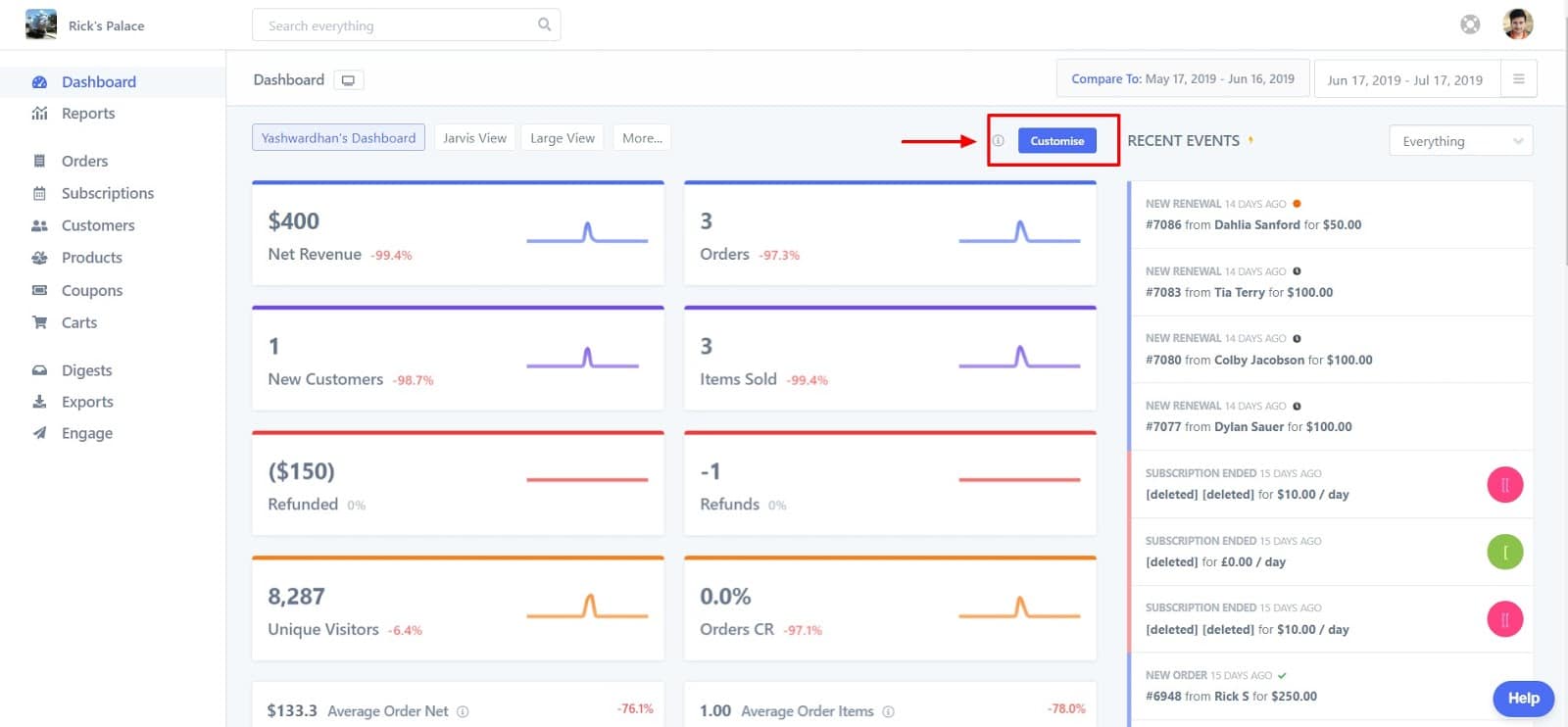
Now add a new card by clicking on the New Card button at the bottom.
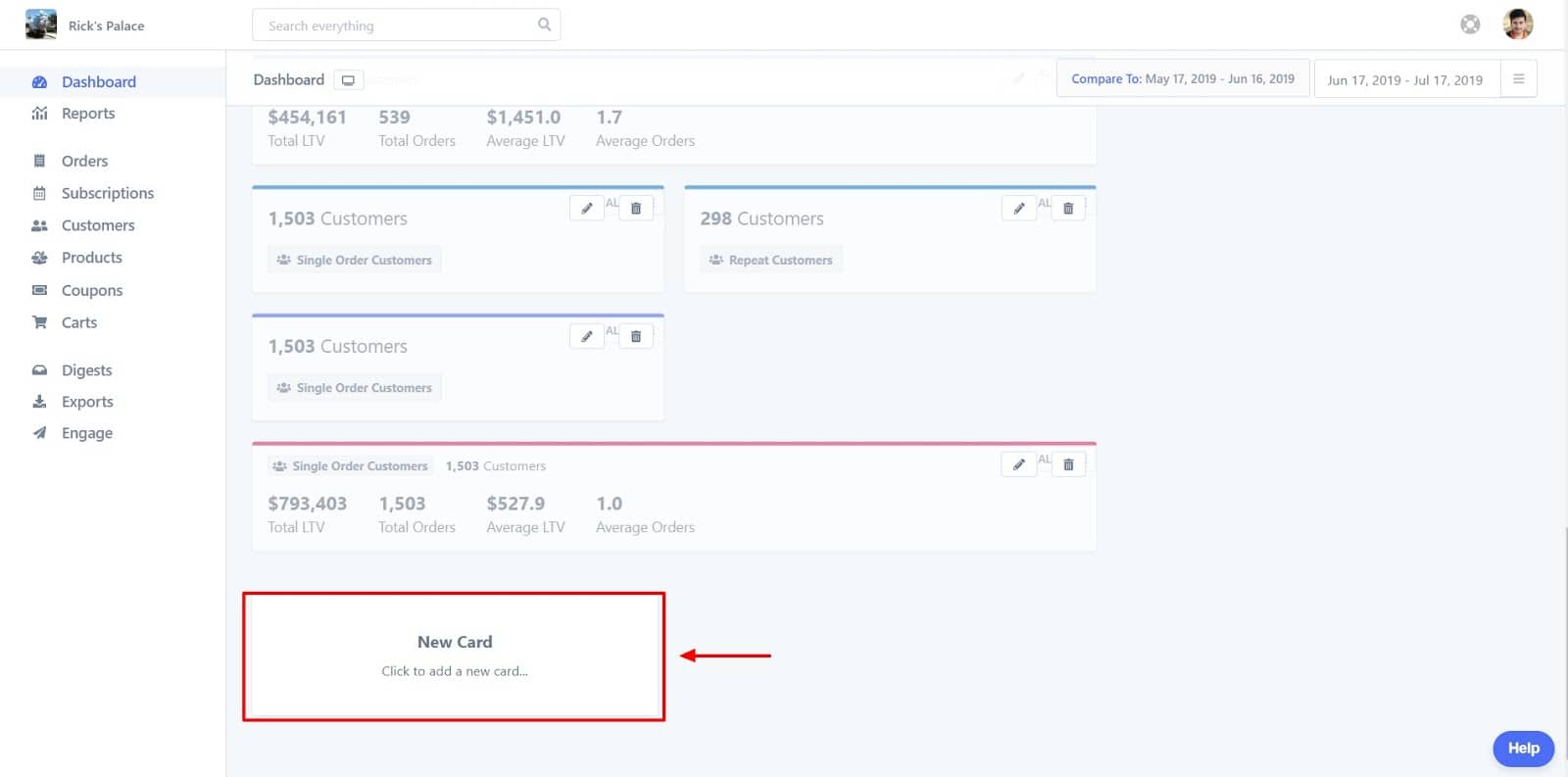
From types, select ‘segment list’ or ‘segment totals’. I am going with segment totals here. Now, select the resource as customers and select the segment from the list which you saved earlier.
Select the stats you want to display and select a color for the card if required. Once done, click on the insert button.
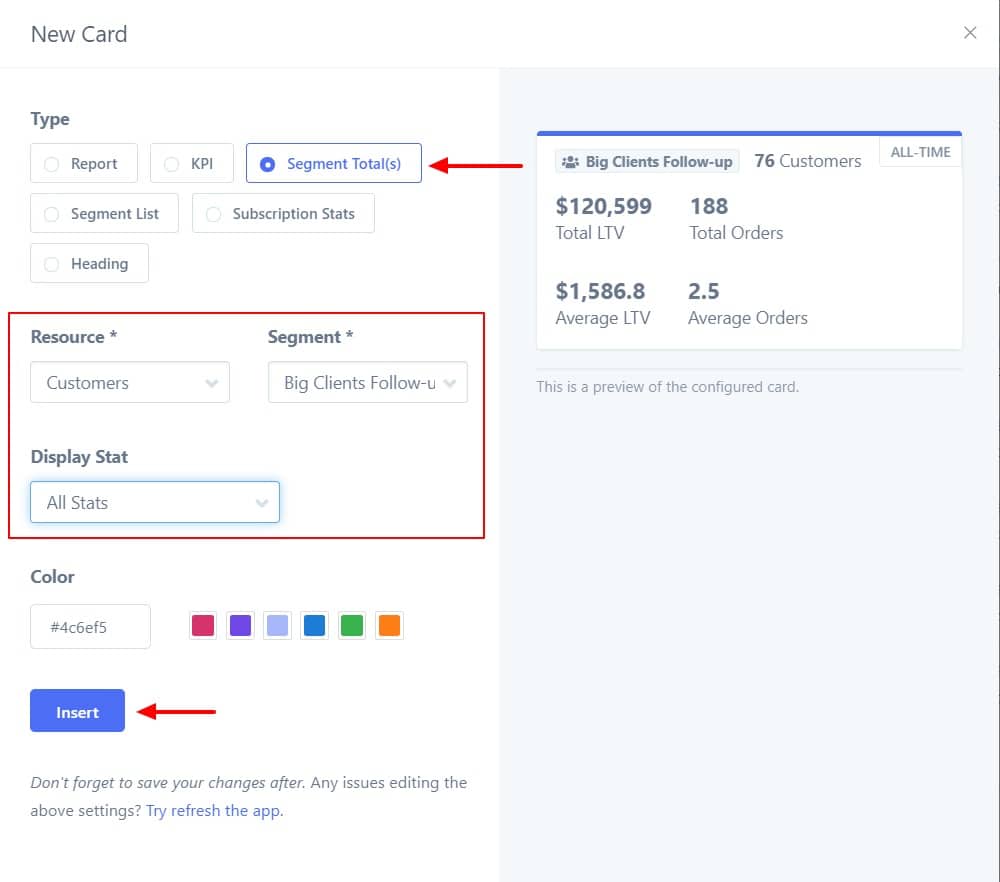
This is what your custom customer segment on Metorik dashboard would look like.
Summing It Up!
I am sure now you know the importance of eCommerce customer segmentation and how you can leverage Metorik to segment your customers on various parameters and see their performance in the dashboard.
If you haven’t set up your WooCommerce store with Metorik, you can do it easily. Go ahead give it a try with free 30 day trial period and see the power of customer segmenting on your WooCommerce store.
Let me know how are you planning on doing eCommerce customer segmentation for your WooCommerce store.
Are you planning on segmenting more than just customers?
I would love to know what’s your take on customer segmentation. Just comment your thoughts down below and I will get back to you ASAP!

